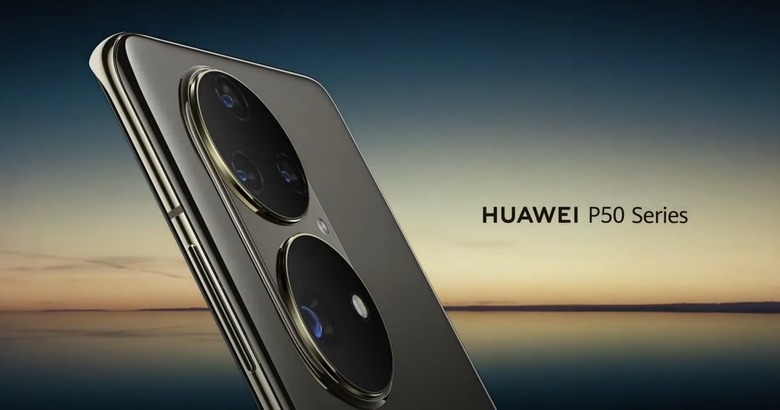Huawei Admits That It's Struggling To Launch The New P50 Flagship Phone
Huawei unveiled HarmonyOS on Wednesday, its newest operating system that will run on a variety of devices, including smartphones, tablets, wearables, and other smart devices. HarmonyOS replaces Google's AOSP Android version that Huawei used on its smartphones and tablets that were released in the past couple of years. These were the years following the US ban, which prohibited American companies like Google from working with Huawei. HarmonyOS will not run Google apps either, and the new operating system looks more like Apple's iPadOS than Google's mobile operating system.
HarmonyOS will be rolled out to an impressive number of devices, including many of Huawei's previous P-series and Mate-series flagships. Other handsets should be released with HarmonyOS preloaded, like the P50 series that Huawei has just teased. Unfortunately, it's unclear when Huawei's new P50-series phones will launch because Huawei said it's struggling to make the phone available to buyers.
In a regular year, Huawei's newest P-series smartphone would have already been available in stores by early June. The Huawei P phones are usually unveiled in March, hitting international markets in the months thereafter.
But 2021 isn't a usual year. It's the second year of the pandemic and the current chip shortage must be impacting Huawei's ability to develop certain devices just, like every other company in the industry. On top of all that, the Chinese smartphone maker has another ongoing problem. It was banned from doing business with American companies a couple of years ago, and the ban impacted both the hardware and software sides of things.
That's why the Huawei P50 series isn't official — Huawei can't launch it yet. During the HarmonyOS event, Huawei's Richard Yu said that the P50 was supposed to launch in the spring. "It's a sheer beauty with an ultra-thin and lightweight design and an iconic design language," the exec said. "It lifts mobile photography to a new level."
Yu continued, "For reasons you are all aware of, a launch date has not yet been set. But we are trying to figure out how to make this great product available to you."
Huawei did show renders of the handset that focused on the rear camera modules. The phone has two distinct camera sections, just as early Huawei P50 leaks said. The top module features three lenses, while the one on the bottom has a single, larger camera and a secondary flash. Huawei did not elaborate on the camera specs or other P50 specs in general, and we were not shown the phone's complete design or the display. The phone does seem to have curved edges just like its predecessors, and the camera still comes with Leica branding.
Yu did not offer an exact reason for Huawei's inability to launch the handset on schedule. It's easy to guess that Huawei might be struggling with various component shortages following the US ban, with particular emphasis on its custom chips. The company might not be able to manufacture its own high-end Kirin chips that will power phones like the P50 and other 2021 Huawei flagships.
